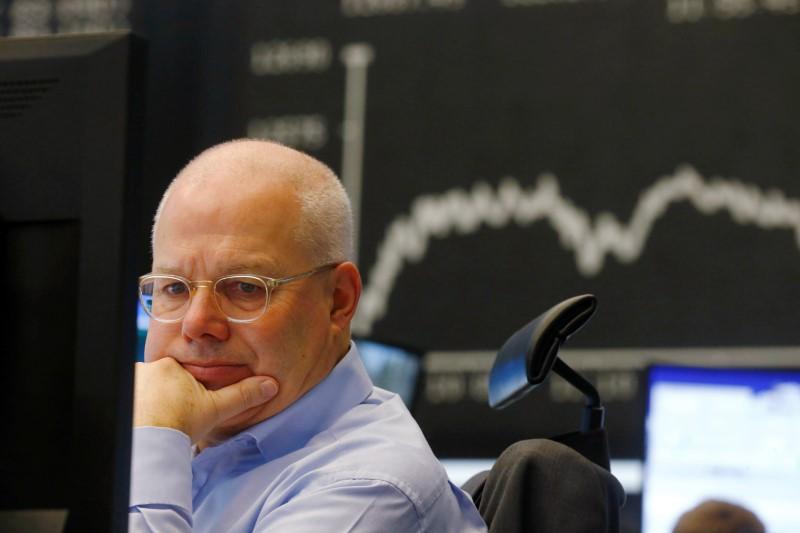
LONDON (Reuters) – European investors have raised their bond allocations in March while keeping their equity exposure at six-month lows, in a month marked by a sharp tech sector selloff and brewing trade tensions that threatened to dent world economic growth.
Reuters’ monthly survey of 21 European asset managers showed average bond holdings rose 1.4 percentage points on the month to 42.1 percent, the highest since August 2017, while exposure to euro zone debt rose more than five percentage points to 59.1 percent, also a seven-month high.
U.S. debt allocations rose to 20.7 percent, the highest since last September, up from 18.2 percent in February.
The poll was conducted between March 15-28, a period when the FAANG group of U.S. technology firms – Facebook (FB.O), Apple (AAPL.O), Amazon (AMZN.O), Netflix (NFLX.O) and Alphabet’s Google (GOOGL.O) – saw a hefty reversal that took the S&P 500’s tech index down more than 10 percent on the month .SPLRCT.
It also coincided with U.S. President Donald Trump announcing $60 billion in tariffs on Chinese goods, alongside levies on steel and aluminum imports from several countries.
The fears of tit-for-tat protectionist tariffs and trade wars burst on to markets just as softer purchasing manager surveys seemed to imply that economic growth, at least in the developed world, might be peaking.
That’s especially so in the euro zone where economic sentiment has slipped for three straight months and Citi’s economic surprise index .CESIEUR has tumbled into negative territory after a long period on positive ground.
Two-thirds of the fund managers who answered a question on the topic thought euro zone economic growth had already peaked in this cycle, though they saw a sharp deterioration as unlikely.
Accordingly, the share of euro zone stocks in equity portfolios slipped to 29.7 percent – the second-lowest level since November 2014, poll data showed.
“Euro zone growth has most likely peaked,” Colin Harte, head of research and portfolio manager at BNP Paribas Asset Management said, though he added: “We do not expect it to fall sharply over the balance of 2018/early-2019, unless the world experiences a trade war.”
Most expected regional growth to stay above potential, noting ultra-low borrowing costs even if the European Central Bank ends its bond purchase program this year.
“A (growth) peak is not what matters. What will be key is the ability of not decelerating too quickly. In this regard, there are no signs that a strong deceleration is on the cards,” said Francois Savary, chief investment officer of Swiss wealth manager Prime Partners.
Trade could be the unknown factor, however. Asked whether an all-out trade war would hurt the dollar or boost it, just over half of those who responded predicted a weakening in the greenback, while a third expected it to strengthen.
The dollar is ending March with its fifth straight quarter of losses against a basket of currencies .DXY.
Widening U.S. budget deficits are undermining the dollar despite some support from higher interest rates, said Amundi’s chief investment officer Pascal Blanque, who noted that trade tensions in 1982-84 and 2001 had caused dollar depreciation.
“A full-scale global trade war, with retaliation actions among trading partners, would undermine confidence, threaten the global recovery, and would push the dollar in the direction of further weakening,” Blanque added.
The U.S. Federal Reserve raised interest rates this month and is seen repeating that twice more this year, and possibly three times if the jobs picture continues to improve.
Fund managers who replied to a survey question on the subject were evenly divided as to whether rates would rise a total of three or four times in 2018.
Paolo Zanghieri, senior economist at Generali Investments, was in the latter camp, noting the robust labor market, even if the Fed’s March projections showed three moves.
“It would take an upgrade of projections by just one FOMC member to tilt the median to four hikes, and we expect this to happen at the June meeting, on the back of stronger readings for inflation and real activity,” he said.
 0 comments
0 comments





